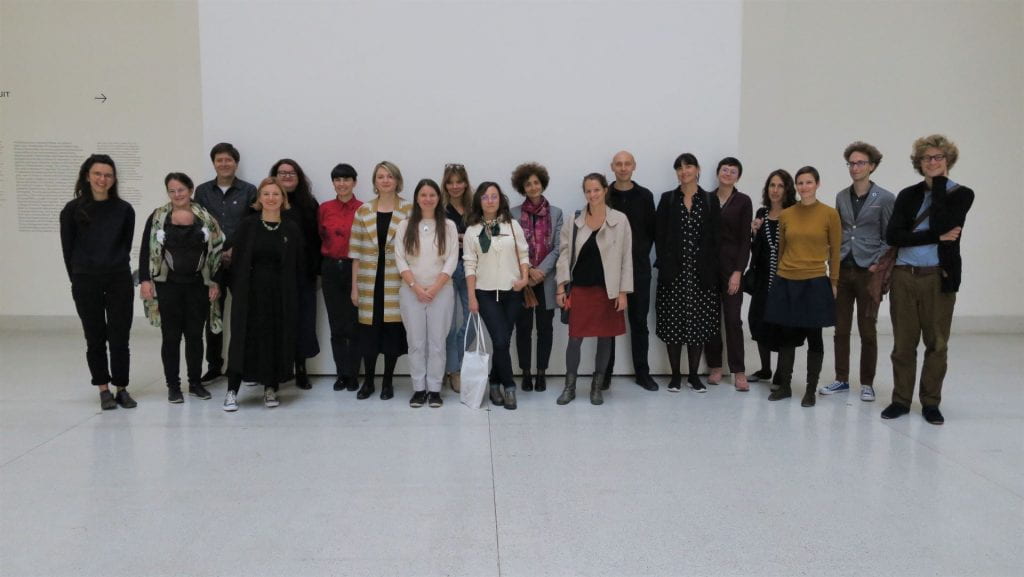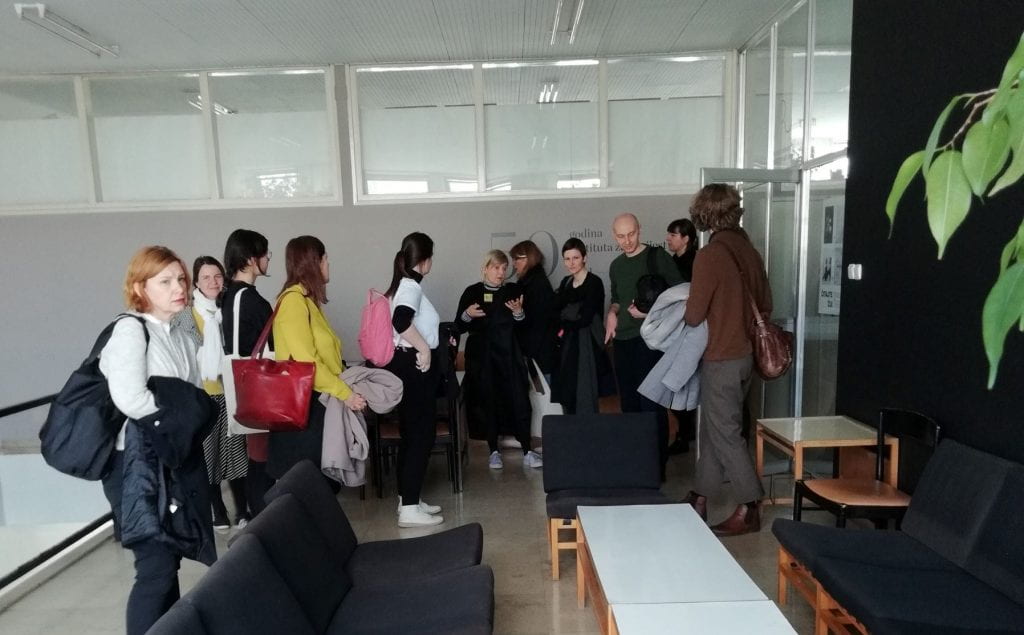 We had the opportunity to visit the exhibition 1918–1938: First Republic at the National Gallery in Prague in the company of co-curator Jitka Šosová. Through a vast number of artworks, this exhibition presents the artistic life of the interwar period, during the First Czechoslovak Republic. The curators have chosen to present the artistic production of this period concentrating on one aspect: the institutions. This well-defined approach makes the extensive material readable, creating a clear narrative of this period. The exhibition provides a refreshing, new look at interwar art in Czechoslovakia, offering new understandings, especially compared to traditional, stylistic narratives.
We had the opportunity to visit the exhibition 1918–1938: First Republic at the National Gallery in Prague in the company of co-curator Jitka Šosová. Through a vast number of artworks, this exhibition presents the artistic life of the interwar period, during the First Czechoslovak Republic. The curators have chosen to present the artistic production of this period concentrating on one aspect: the institutions. This well-defined approach makes the extensive material readable, creating a clear narrative of this period. The exhibition provides a refreshing, new look at interwar art in Czechoslovakia, offering new understandings, especially compared to traditional, stylistic narratives.

For me, the most interesting part however was not a specific institution but the introduction to the exhibition, featuring different charts: one showing the geographic setting with the numbered halls relating to the art centres, another highlighting the multi-national composition of the population, varying from region to region, and finally a chart providing a comparative periodization of the eighteen (!) institutions showcased at the exhibition.
 The curatorial concept attempts to be as geographically inclusive as possible, dedicating one room to each major artistic centre, namely Brno, Bratislava, Zlín, Košice, and Užhorod. Nonetheless, thirteen parts are still dedicated to Prague. One, without a thorough knowledge of the different art scenes, only wonders whether this thirteen to five ratio in favour of Prague represents the overwhelmingly dominant role of the capital, or it is rather – at least partly – due to the composition of the collections at the National Gallery that the curators had to build upon? Whichever is case, the 1918–1938: First Republic remains a magnificent contribution to art history; one can only hope that the somewhat outdated floor dedicated to the post-war period will receive a similarly refreshing treatment in the close future.
The curatorial concept attempts to be as geographically inclusive as possible, dedicating one room to each major artistic centre, namely Brno, Bratislava, Zlín, Košice, and Užhorod. Nonetheless, thirteen parts are still dedicated to Prague. One, without a thorough knowledge of the different art scenes, only wonders whether this thirteen to five ratio in favour of Prague represents the overwhelmingly dominant role of the capital, or it is rather – at least partly – due to the composition of the collections at the National Gallery that the curators had to build upon? Whichever is case, the 1918–1938: First Republic remains a magnificent contribution to art history; one can only hope that the somewhat outdated floor dedicated to the post-war period will receive a similarly refreshing treatment in the close future.
(Daniel Véri)
 Close
Close
















